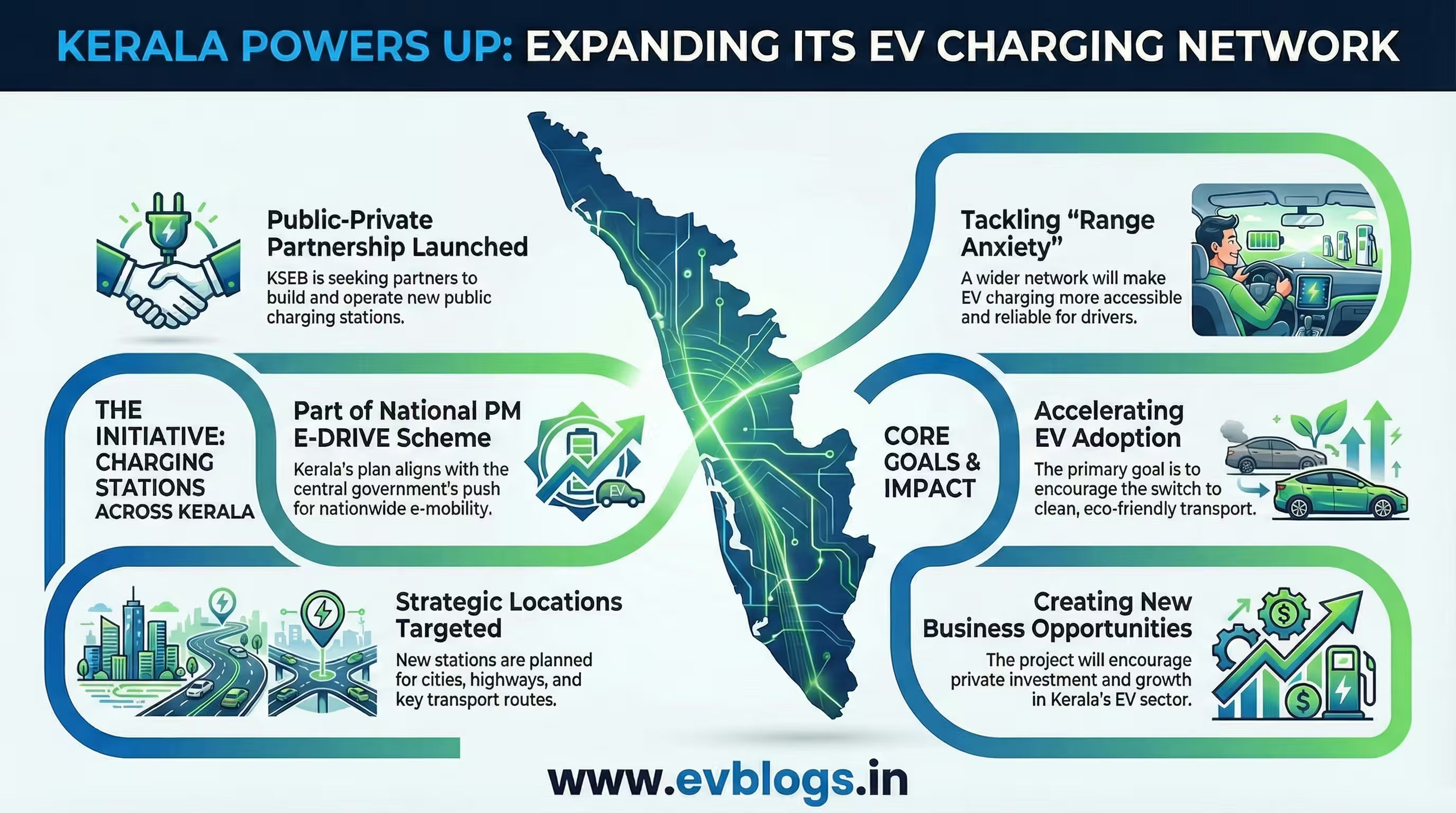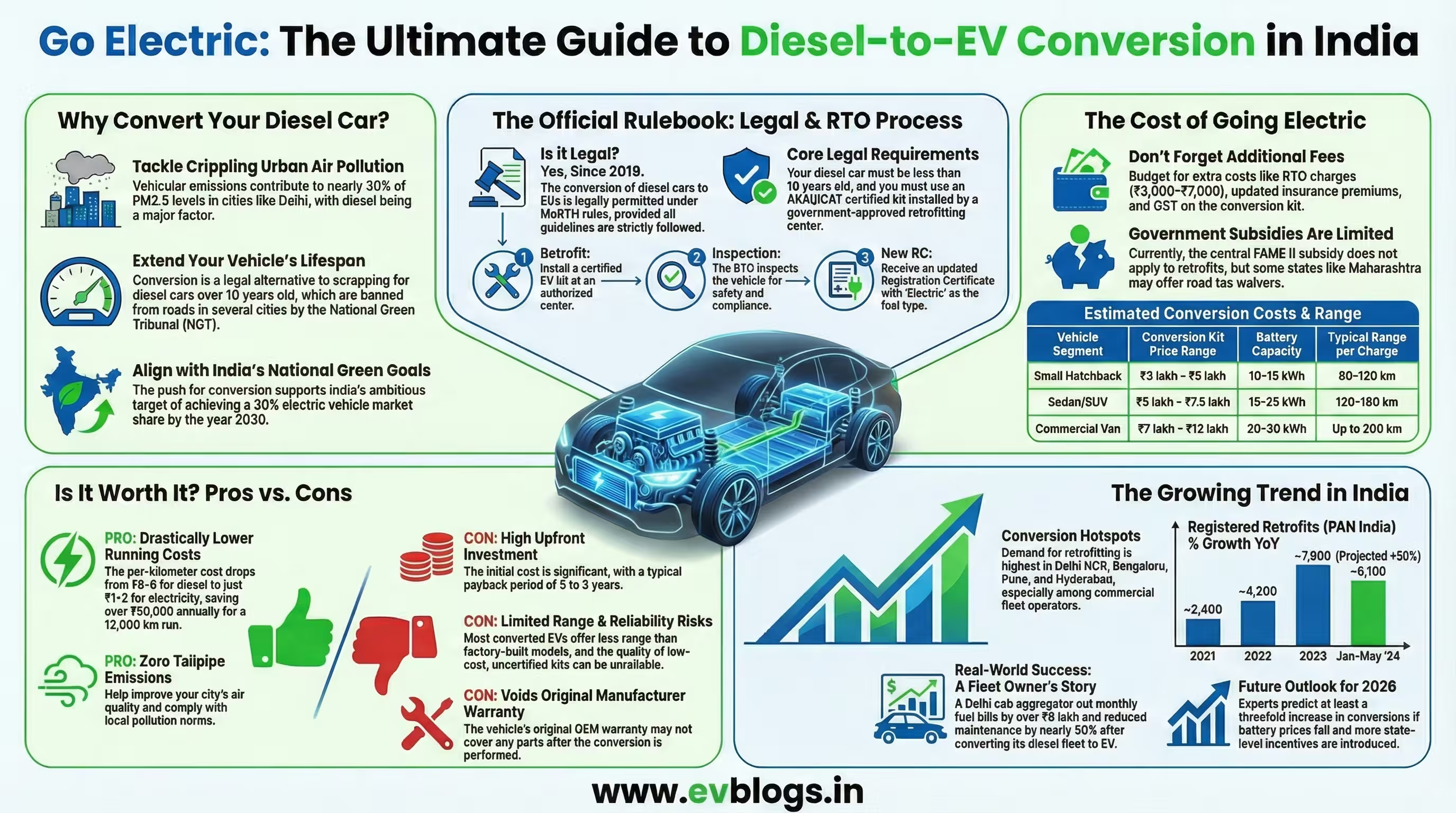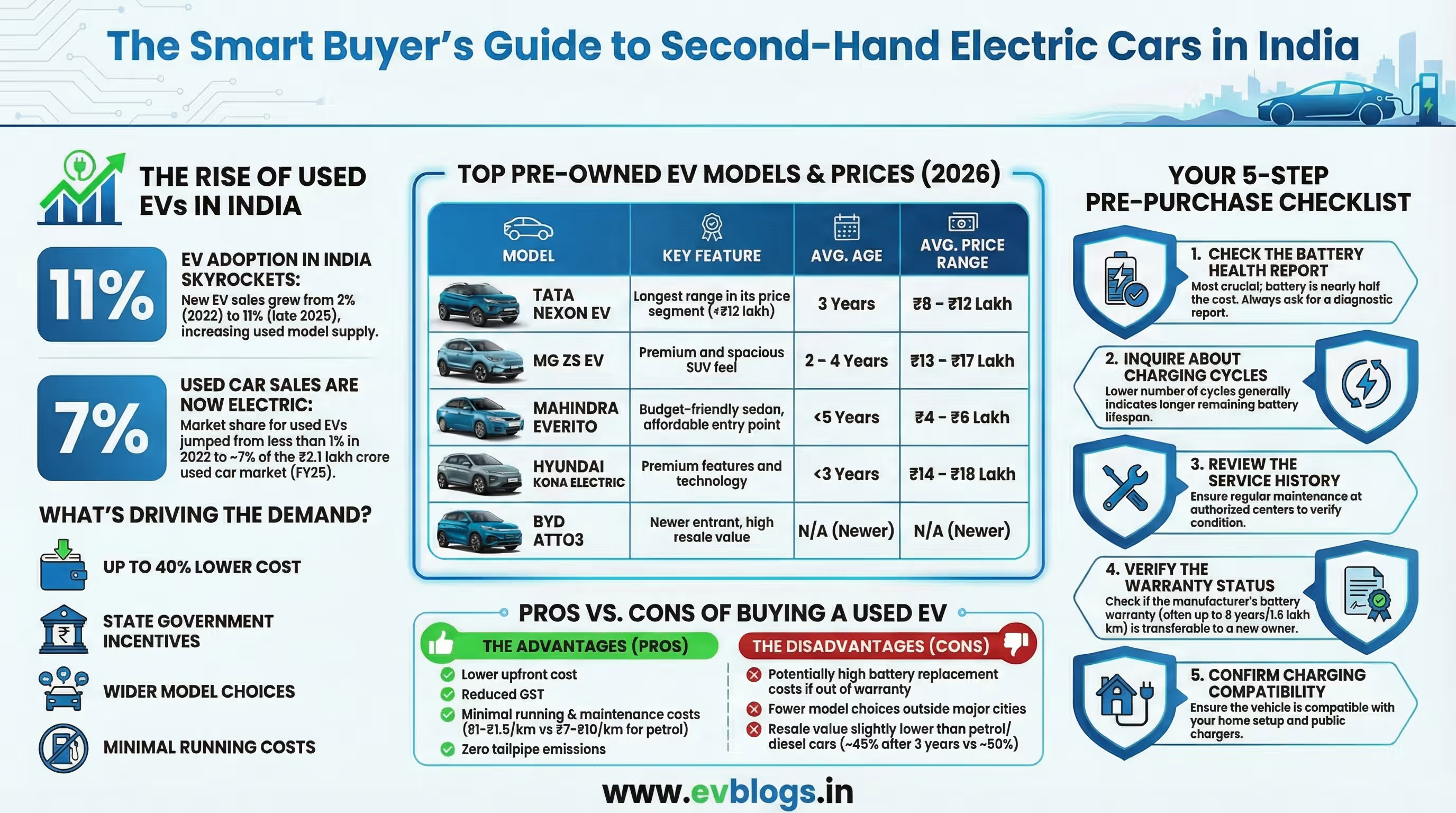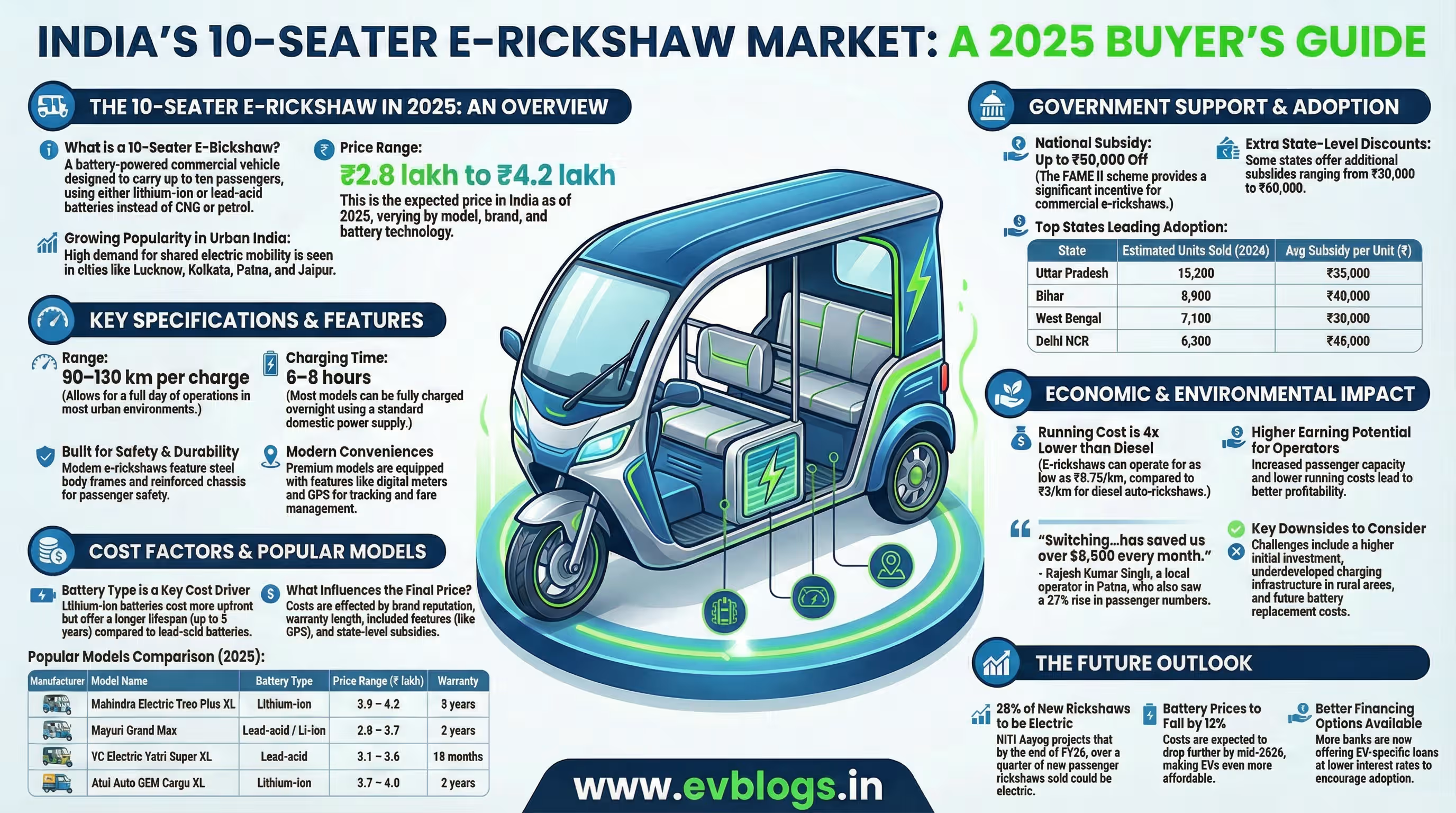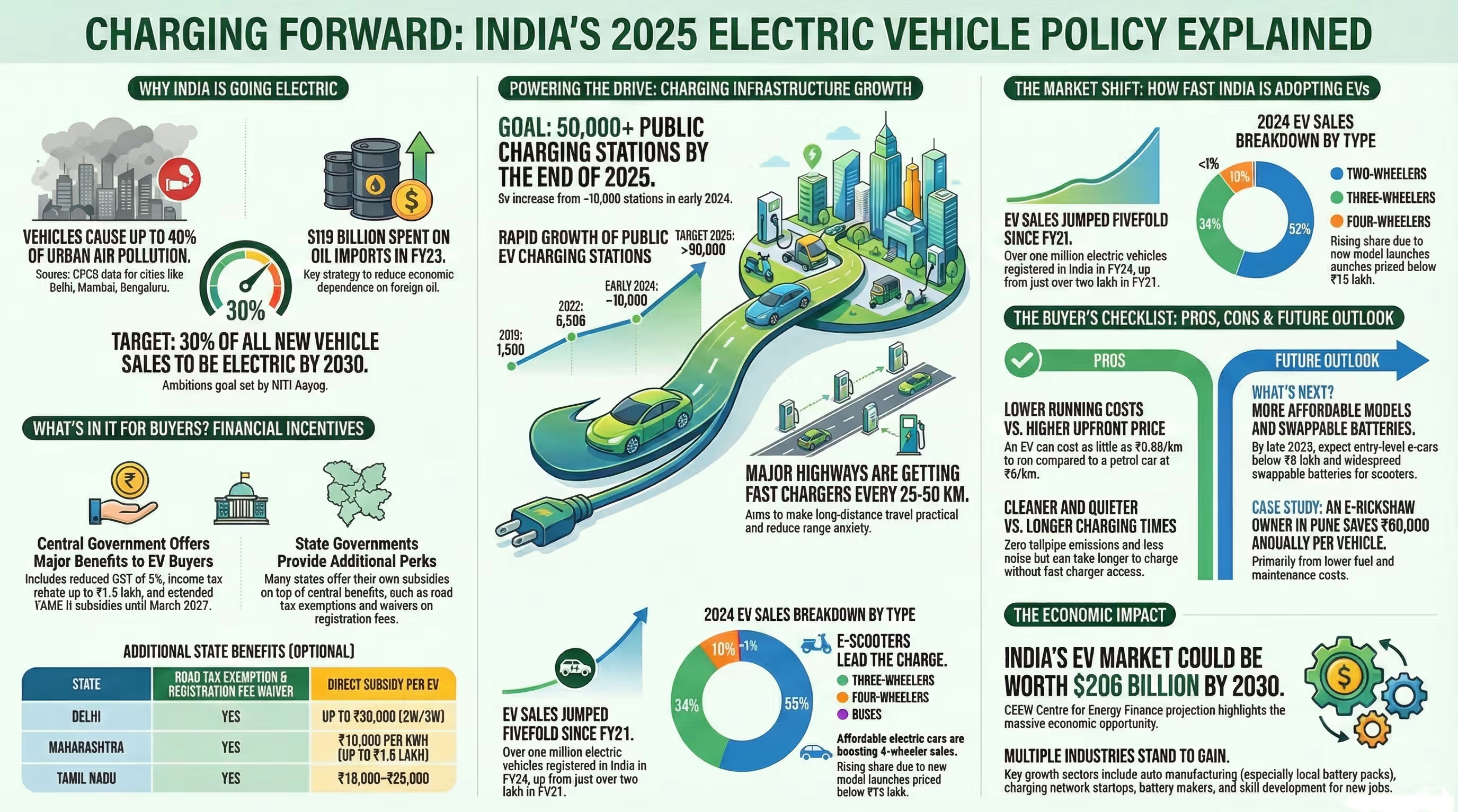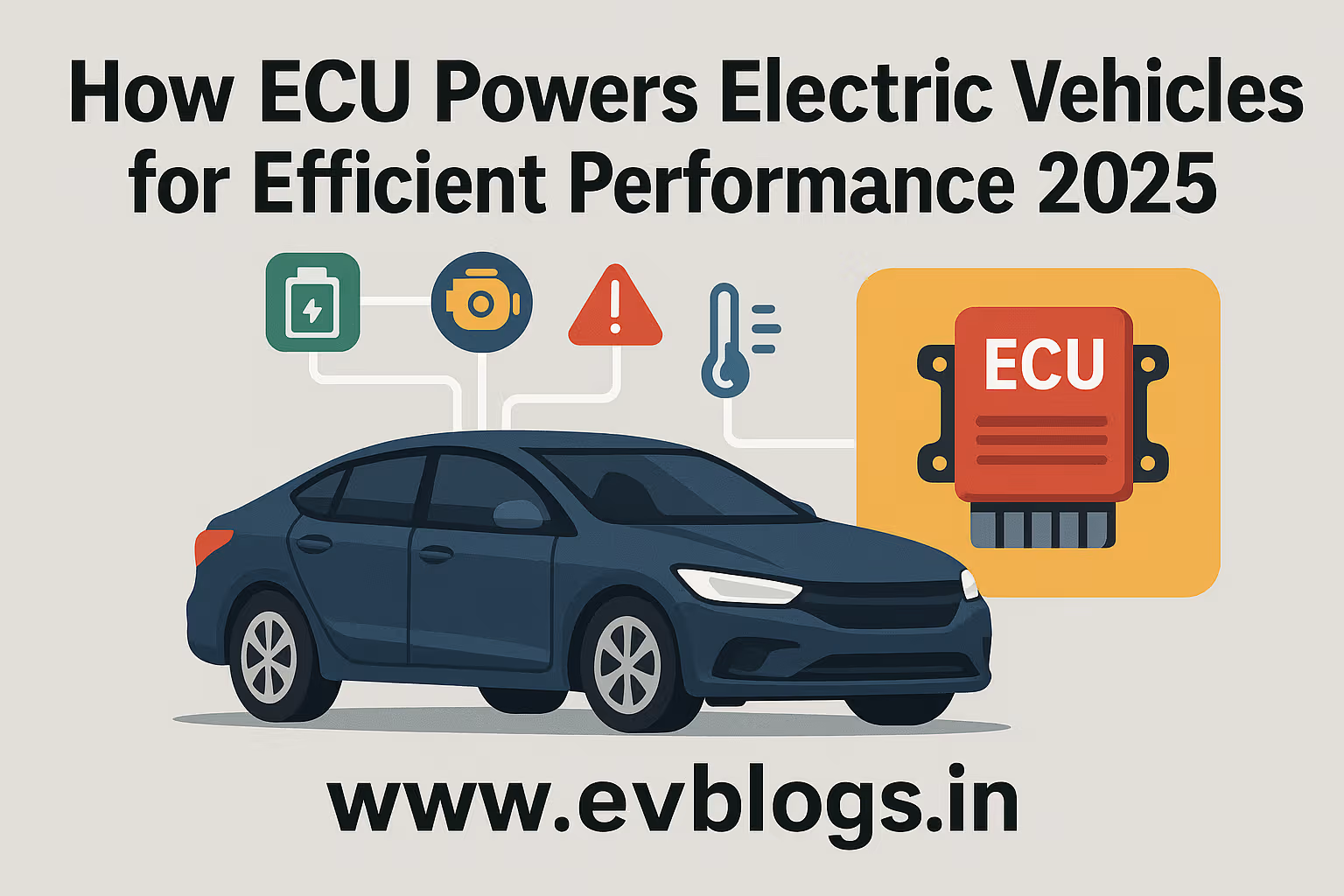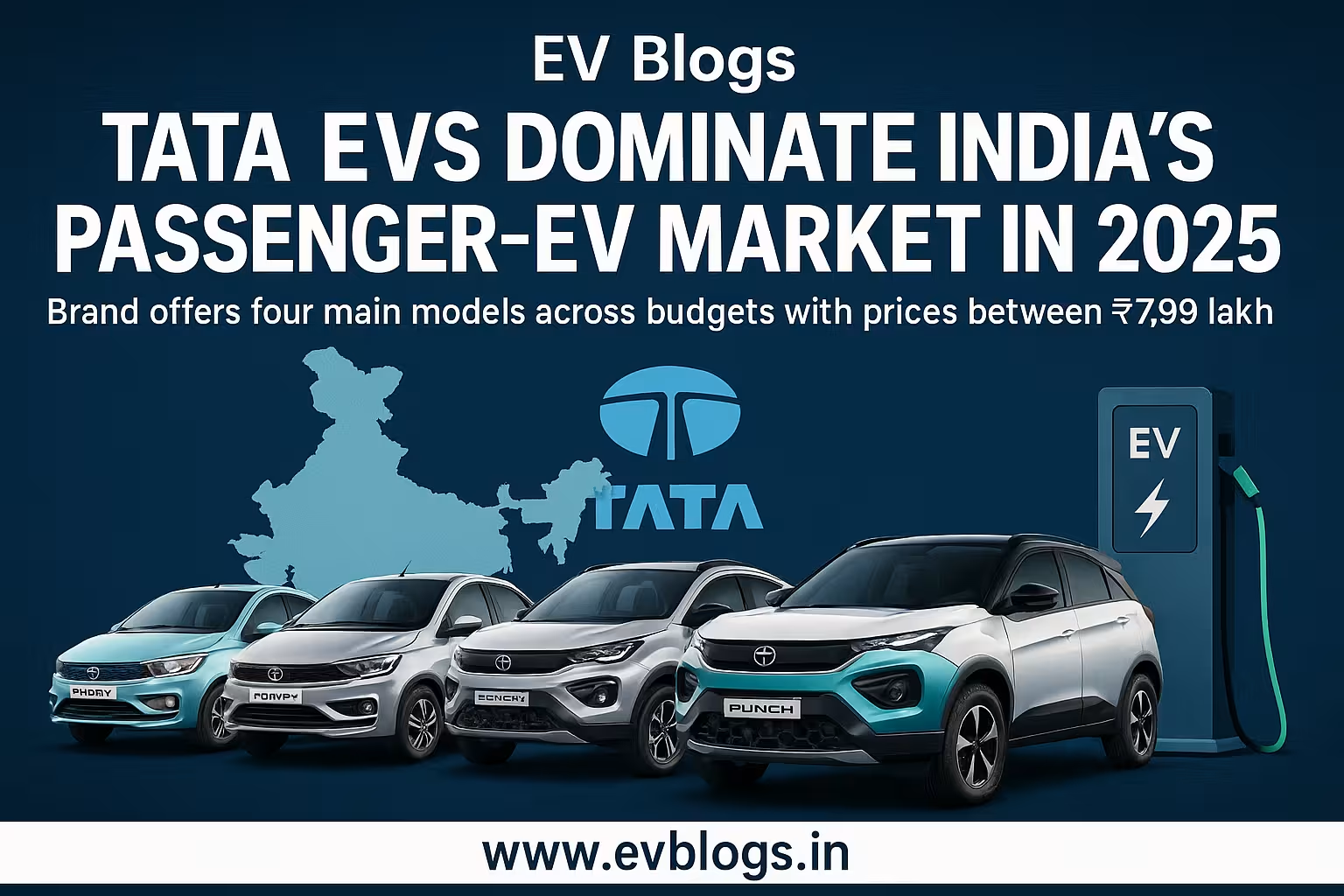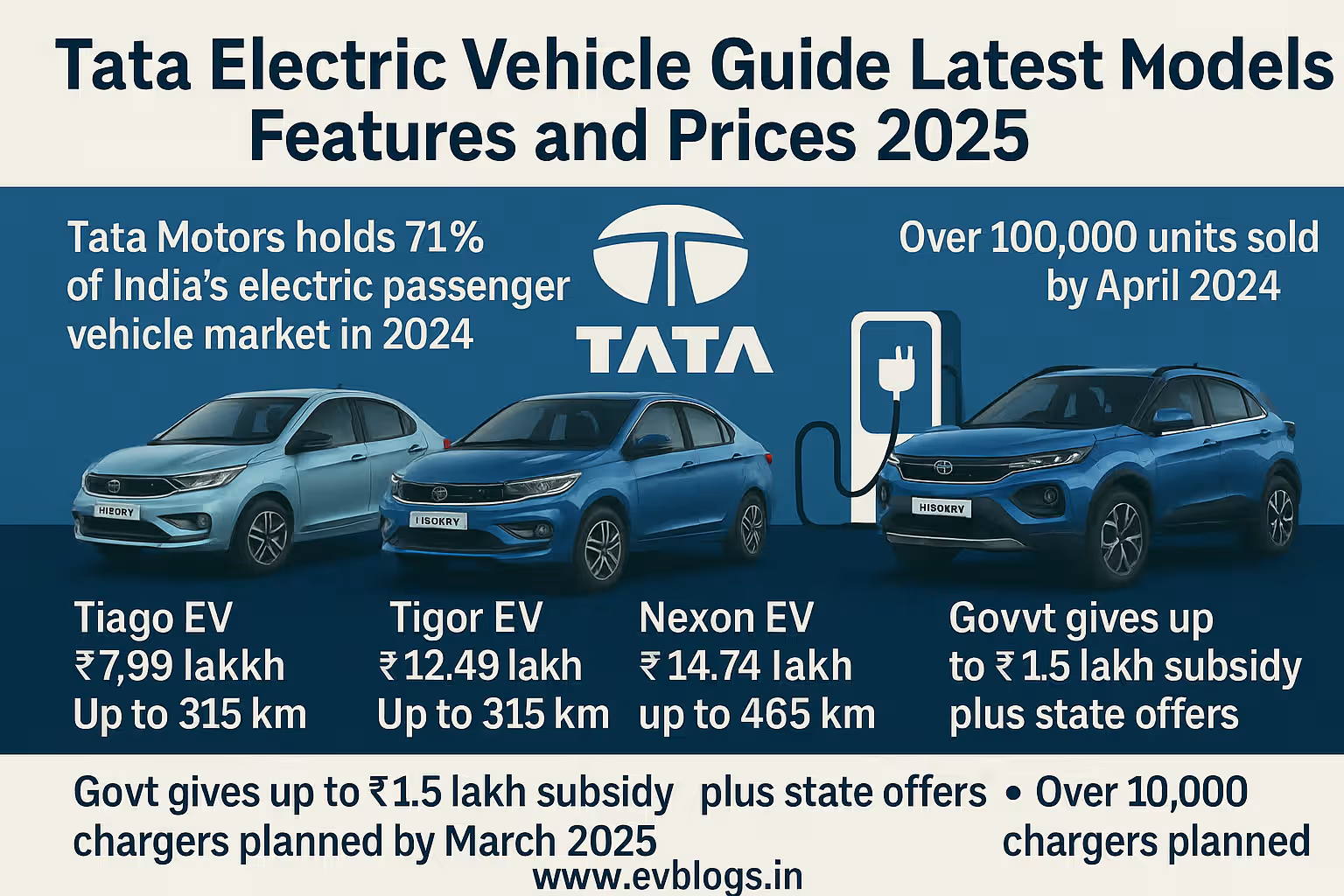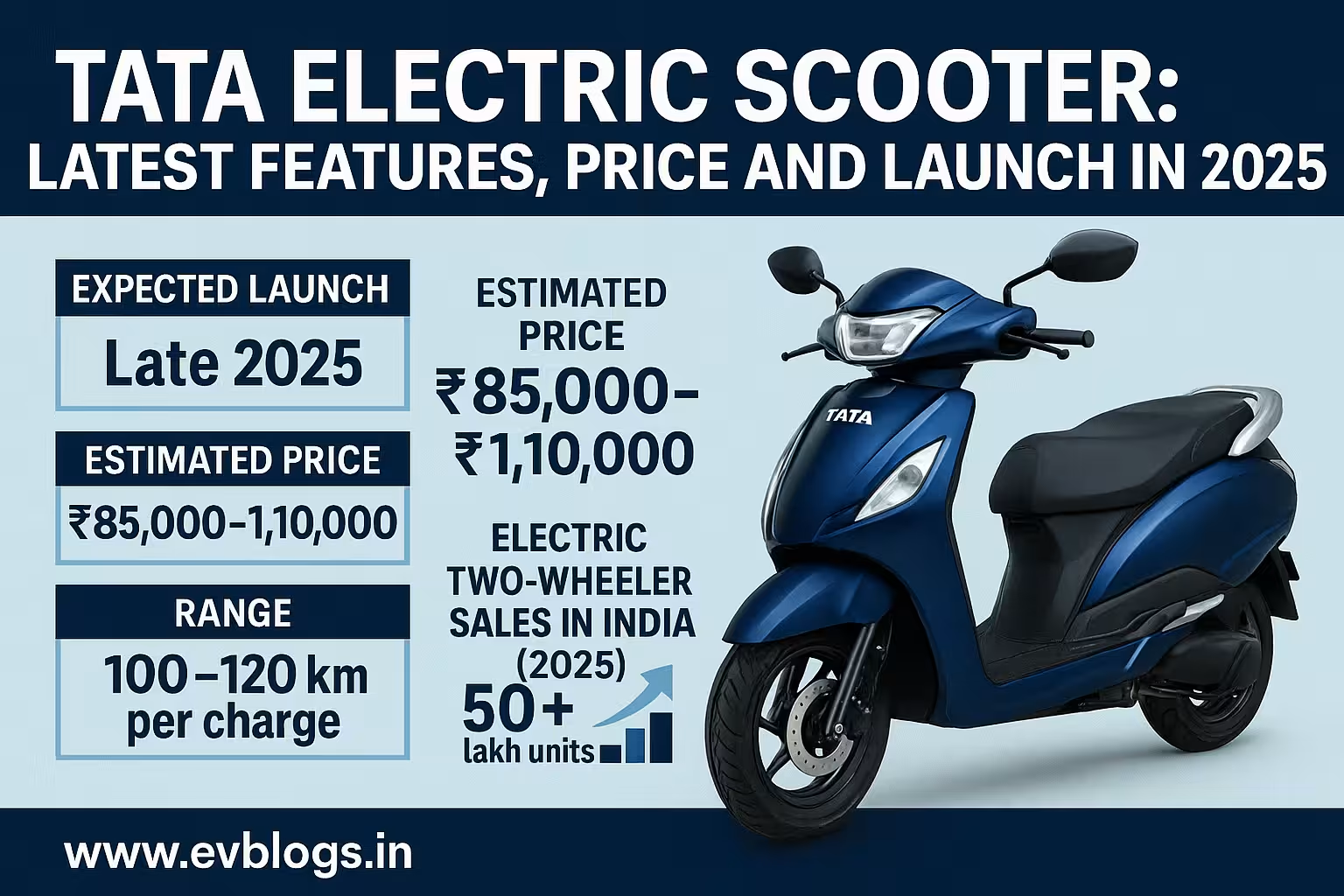Hedhvick Hirav
Hedhvick Hirav is a dedicated EV researcher and editor with over 4 years of experience in India’s growing electric vehicle ecosystem. Their contributions have been recognized in leading sustainability publications and automotive journals.
Summarize & analyze this article with
Choose an AI assistant and open this article directly:
Tip: if the AI doesn’t fetch the page automatically, paste the article URL manually.
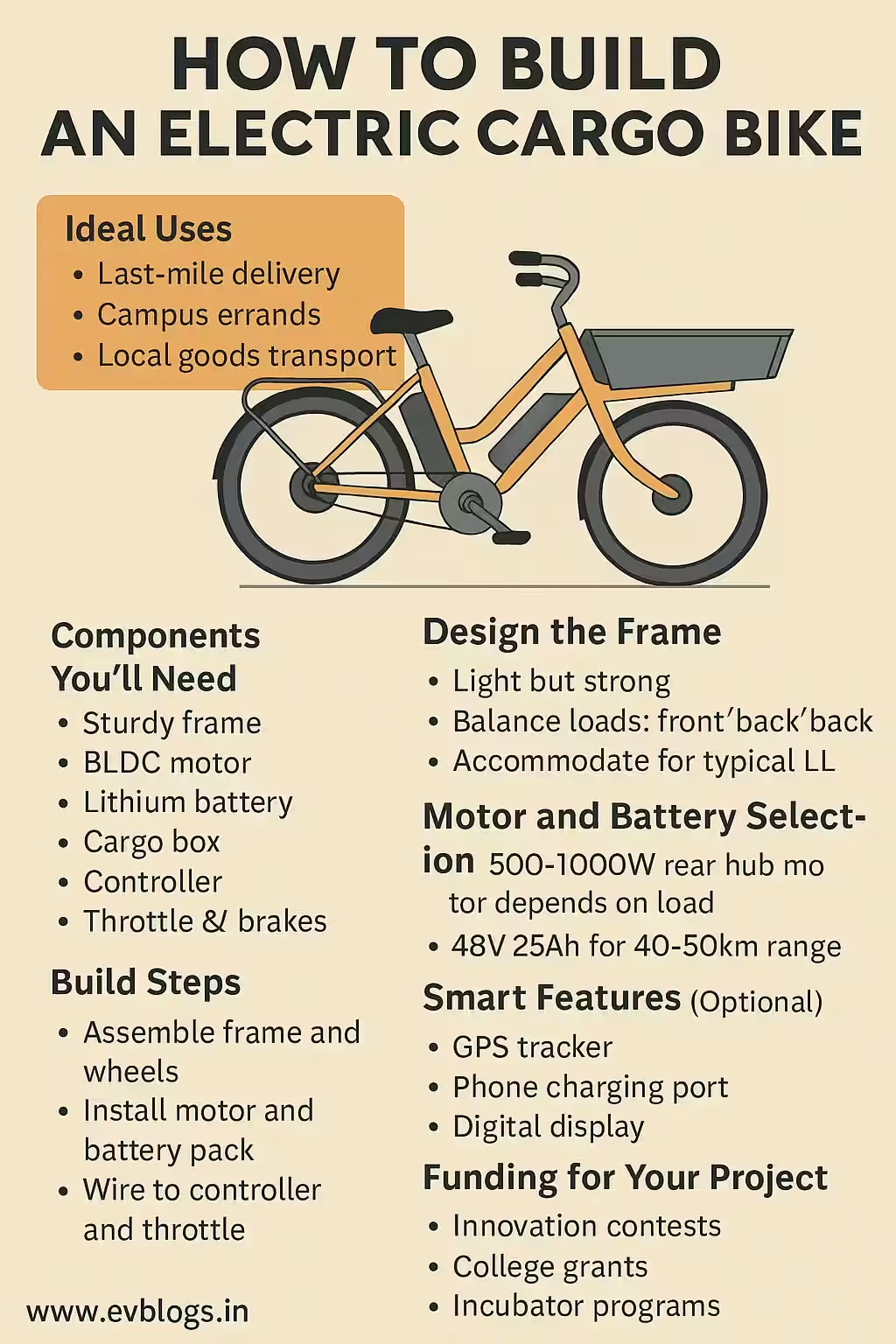
What Is an Electric Cargo Bike and Why Are They Gaining Popularity in India?
Electric cargo bikes are specially designed bicycles powered by an electric motor, built to carry heavy loads or multiple passengers. In India, these bikes are fast becoming a smart solution for last-mile delivery, groceries transport, food distribution, and even for small businesses needing cost-effective logistics. With the Government of India actively promoting electric mobility under the FAME II scheme, and cities facing growing air pollution, electric cargo bikes are now more accessible and practical than ever in 2025.
- You can use electric cargo bikes to carry goods, children, or even run errands in congested urban areas.
- They offer a budget-friendly, eco-friendly alternative to petrol-driven two- and three-wheelers.
- Indian e-commerce giants and delivery startups are adopting them to reduce their carbon footprint and operational costs.
- Many local manufacturers now offer customizable models suitable for Indian roads and weather.
Did You Know?
In 2025, India’s electric two-wheeler market is projected to reach 8 million units, with cargo bikes forming a significant niche for SMEs and delivery sectors (Source: SIAM & NITI Aayog, 2025).
Who Should Consider Building an Electric Cargo Bike for a Student Project in India?
Building an electric cargo bike is an excellent project for college or high school students. It’s not just for engineering streams—you can include students from design, environmental sciences, business, and even urban planning.
Why should students take up this project?
- It addresses real-life Indian challenges: urban congestion, pollution, and small business logistics.
- You get hands-on exposure to mechanical, electrical, and electronic concepts.
- It encourages teamwork, communication, and project management skills.
- This project fits perfectly with new National Education Policy (NEP) 2020 goals for experiential learning.
Indian students interested in sustainable development, renewable energy, or entrepreneurship will especially benefit.
Expert Insight
Many Indian engineering colleges, like IIT Madras and NIT Trichy, now support e-mobility hackathons and offer grants for student-led EV projects.
What Are the Key Components Required to Build an Electric Cargo Bike in India?
Building an electric cargo bike in India requires careful selection of components that are robust and easily available. Here’s what you need to get started:
- Frame: Prefer sturdy steel or reinforced aluminum, ideally designed for heavy loads.
- Electric Motor: Mid-drive (for hilly terrain) or hub motor (for city rides); 250W to 750W (Indian CMVR rules cap e-bikes to 250W for non-registration use).
- Battery: Lithium-ion (Li-ion) is preferred for lightweight and longer life; 36V or 48V, with at least 13Ah capacity for 50+ km range.
- Controller: Regulates power from the battery to the motor.
- Throttle & Pedal Assist System: Allows you to control speed and effort.
- Cargo Rack or Box: Customizable for your intended load—groceries, parcels, or even passengers.
- Wheels and Tires: Heavy-duty, puncture-resistant tires (minimum 26-inch for Indian roads).
- Brakes: Disc brakes, preferably hydraulic, for better stopping power.
- Lighting & Indicators: For safety in low visibility and compliance with Indian road standards.
Other essentials:
- Wiring harness, waterproof connectors
- Display panel for speed, battery status, etc.
- Suspension (optional but recommended for Indian roads)
- Side stand, horn/bell, mudguards
Did You Know?
As of 2025, most Indian states allow electric cycles with up to 250W motors and speeds under 25 km/h to run without registration or driving license.
Which Indian Brands and Kits Are Popular for Electric Cargo Bike Projects in 2025?
There are several Indian and international companies offering reliable EV kits and ready-made cargo bike frames compatible with Indian conditions. Here’s a quick comparison:
| Brand/Kit Name | Type | Motor Power | Battery (Ah) | Price (2025, INR) | Warranty | Made in India | Notable Feature |
|---|---|---|---|---|---|---|---|
| Motovolt Kit | Conversion Kit | 250W | 13 | ₹22,500 | 1 year | Yes | Smart App integration |
| GoZero Mobility | Complete Bike | 250W | 15 | ₹39,999 | 2 years | Yes | All-weather design |
| Hero Lectro Cargo | Ready Bike | 250W | 17 | ₹54,990 | 2 years | Yes | Large cargo rack |
| EMotorad Conversion | Conversion Kit | 350W | 14 | ₹25,999 | 1 year | Yes | Fast charging |
| Elektron EV | Complete Bike | 500W | 18 | ₹59,999 | 1 year | Yes | High payload |
| Yulu Move | Shared Platform | 250W | 12 | NA (Subscription) | NA | Yes | IoT-enabled |
| Ampere Cargo Kit | Conversion Kit | 250W | 14 | ₹21,999 | 1 year | Yes | Designed for delivery |
| PURE EV ETrance Neo | Complete Bike | 350W | 15 | ₹49,999 | 2 years | Yes | Long range |
| Oximoto KIT | Conversion Kit | 500W | 20 | ₹28,000 | 1 year | Yes | High torque |
| Bosch Cargo Line | Imported Kit | 250W | 14 | ₹55,000+ | 2 years | No | Premium reliability |
Detailed Descriptions:
- Motovolt Kit: Affordable, app-based telemetry, easy DIY installation.
- GoZero Mobility: Urban-focused, comes fully assembled, weather-resistant.
- Hero Lectro Cargo: Well-known Indian brand, large racks.
- EMotorad: High power, quick charge, good for slightly heavier loads.
- Elektron EV: Premium, higher payload, robust design for rough use.
- Yulu Move: Subscription-based, shared bikes mainly for city logistics.
- Ampere Cargo Kit: Delivery-focused, easy to retrofit.
- PURE EV: Reliable, long battery life, urban last-mile solution.
- Oximoto: High torque, ideal for hilly or semi-urban areas.
- Bosch Cargo Line: High-end German kit, best for those seeking reliability.
Expert Insight
Always check if your kit’s motor is “BIS certified” (Bureau of Indian Standards) for safety and compliance in India.
How Do You Plan and Design Your Own Electric Cargo Bike for Indian Conditions?
Before you start building, planning is crucial. Think about what you will carry, your route, and your usage pattern. Here’s what to consider:
- Payload Capacity: Most Indian users need at least 50-100 kg capacity for groceries, parcels, or delivery.
- Frame Design: Front-loader (long john), rear-rack, or tricycle design for maximum stability.
- Weatherproofing: Indian monsoons demand sealed components and anti-rust coatings.
- Ground Clearance: Higher clearance helps with potholes and speed breakers.
- Battery Position: Under the cargo rack or central frame for balance.
- Safety Features: Reflectors, waterproof lighting, and sturdy lock points.
Practical steps:
- Sketch your design or use free software like SketchUp.
- Calculate weight distribution: keep heavy batteries low and central.
- Choose a modular approach for easy future upgrades.
Did You Know?
Leading Indian e-bike startups often conduct “road trials” in Bengaluru and Mumbai to optimize frame design for potholes and traffic jams.
What Is the Step-by-Step Process to Build an Electric Cargo Bike in India?
Here’s a simplified guide for building your electric cargo bike for a student project, tailored for Indian settings:
1. Acquire a Sturdy Frame
- Source from local cycle shops or online platforms like Decathlon or Amazon India.
- Ensure your frame can handle at least 100 kg.
2. Select and Purchase EV Kit
- Choose a reputable Indian kit with after-sales support.
- Prefer kits with detailed manuals and BIS certification.
3. Assemble the Drivetrain
- Install the motor (hub or mid-drive) on the chosen wheel.
- Attach chain and gears as per your design.
4. Mount the Battery
- Secure battery using brackets; ensure theft protection.
- Connect using waterproof connectors.
5. Install Controller, Throttle, and Display
- Fix the controller in a ventilated, dry area.
- Connect throttle and pedal-assist sensors.
6. Add Cargo Box or Platform
- Use sturdy plywood, metal, or plastic crates.
- Secure with metal clamps or bolts.
7. Fit the Wheels, Tires, and Brakes
- Use heavy-duty tires suitable for Indian roads.
- Install disc brakes for better stopping power.
8. Wiring and Safety Checks
- Ensure all connections are tight and insulated.
- Test lighting, indicators, and horn.
9. Test Ride and Adjust
- Try out the bike on different terrains.
- Fine-tune the suspension, brakes, and handlebar position.
10. Document and Present
- Record build process for school/college records.
- Prepare a report including cost, challenges, and learning.
Expert Insight
Never work on the electrical system with the battery connected—always disconnect to avoid short circuits or shocks!
Disclaimer:
Building an EV involves working with high-current batteries. Always follow safety procedures, use insulated tools, and, if possible, consult an experienced mentor or technician.
Why Build an Electric Cargo Bike — The Benefits for Indian Students and Communities?
Electric cargo bikes offer unique advantages for Indian students and the communities they live in:
- Affordable Mobility: Running cost is just ₹0.2-₹0.5/km, compared to ₹2-₹4/km for petrol scooters.
- Eco-Friendly: Zero emissions, supporting India’s 2070 Net-Zero Carbon goals.
- Skill Development: Students learn mechanics, electronics, and sustainability concepts hands-on.
- Income Generation: Students can start a micro-delivery service or rent bikes in their area.
- Inclusive Mobility: Enables women, youth, and elderly to access safe, affordable transport.
Did You Know?
Indian startups like Zip EV and CargoKart are collaborating with colleges to pilot cargo e-bikes in Tier 2 cities to bridge the last-mile gap.
When Is the Best Time to Build or Buy an Electric Cargo Bike in 2025 India?
Timing matters for both cost and learning:
- Academic Calendar: Ideal for summer internships, college fests (like Techfest IIT Bombay), or final-year projects.
- Market Offers: Many Indian brands offer discounts or student sponsorships around National Science Day or World Environment Day.
- Seasonal Considerations: Avoid peak monsoon months (June-August) for easier assembly and testing.
When should you consider upgrading or buying instead of building?
- If you need immediate, reliable performance for a business or daily commute.
- If local government offers subsidies under FAME II or state EV policies.
Expert Insight
In 2025, Karnataka, Delhi, and Maharashtra offer up to ₹10,000 subsidies for electric cycles and kits for students and startups.
How Much Does It Cost to Build an Electric Cargo Bike in India (2025)?
Let’s break down the total cost for a basic student project using Indian components:
| Component | Approximate Cost (INR, 2025) |
|---|---|
| Frame | ₹4,000 – ₹7,000 |
| EV Kit (Motor + Battery) | ₹20,000 – ₹30,000 |
| Cargo Box/Platform | ₹1,500 – ₹3,000 |
| Brakes & Tires | ₹3,000 – ₹5,000 |
| Controller, Display, Wiring | ₹2,000 – ₹4,000 |
| Accessories (lights, bell, lock) | ₹1,000 – ₹2,000 |
| Tools and Misc. | ₹1,500 – ₹3,000 |
| Total | ₹33,000 – ₹54,000 |
- DIY building saves 20–30% over buying a ready-made cargo e-bike.
- Operating cost (electricity for charging) is negligible: one full charge costs less than ₹10 for a 15Ah battery.
Disclaimer:
Prices vary by city, availability, and component quality. Always check for student discounts or bulk rates from suppliers.
Did You Know?
Some Indian colleges have tie-ups with local EV dealers for discounted parts and free technical workshops.
Which Regulations and Safety Guidelines Apply for Electric Cargo Bikes in India?
Indian laws are friendly toward low-speed electric cycles, but you must follow these safety and legal guidelines in 2025:
- Power & Speed Limit: For non-registration use, motor must be ≤250W, max speed ≤25 km/h.
- No License/Registration: Allowed if above conditions met; else, RTO rules apply.
- BIS Certification: Motor, battery, and charger should be BIS certified.
- Helmet: Strongly recommended even if not legally required.
- Reflectors and Lights: Mandatory for night use as per Indian Motor Vehicle Rules.
- Insurance: Not compulsory for ≤250W cycles, but consider third-party coverage if used commercially.
Expert Insight
Many Indian campuses now require e-bikes to be registered with the college’s security office for safety tracking.
Disclaimer:
Regulations may vary by state. Always check with your local RTO or transport department before road use.
What Are Real-Life User Stories and Case Studies from Indian Students Building Electric Cargo Bikes?
Here are a few inspiring stories from across India:
Akash’s Smart Delivery Bike – Bengaluru
Akash, a mechanical engineering student from RV College, built a cargo e-bike using a Motovolt kit and customized a plywood box for grocery delivery. Over 6 months, his team delivered 1200+ orders in their locality, saving almost ₹18,000 in fuel costs and reducing CO2 emissions by 400kg.
Priya’s Women’s Mobility Project – Pune
Priya and her group at COEP designed a cargo e-tricycle for women street vendors. The project improved safety, doubled vendor incomes, and won a ₹50,000 innovation grant.
IIT Madras E-Mobility Club – Chennai
Students at IIT Madras collaborated with a local NGO to convert old cycles into cargo e-bikes for waste collection. They retrofitted 10 bikes in 2024-25 and are scaling up with CSR funding in 2025.
- Students learned teamwork and entrepreneurship
- Bikes are being used for community projects, not just personal use
- Real-world feedback led to improved designs for rough Indian roads
Did You Know?
In India’s 2025 Smart City initiatives, electric cargo bikes are now included as part of sustainable urban mobility pilot programs.
How Do You Maintain and Troubleshoot Your Electric Cargo Bike in Indian Conditions?
Proper maintenance extends your bike’s life, even in India’s challenging environments.
- Battery Care: Charge regularly, avoid deep discharge, and store indoors in extreme heat.
- Tire Pressure: Check weekly due to potholes and rough roads.
- Brake Pads: Inspect monthly; Indian dust and water wear them out faster.
- Chain Lubrication: Lube every 2 weeks.
- Electricals: Check for loose wires after every monsoon or bumpy ride.
- Cargo Platform: Tighten bolts and check for rust every month.
Common Troubleshooting Tips:
- Motor not running: Check battery charge and fuse.
- Low range: Inspect tire pressure, battery health, and excess cargo weight.
- Noisy ride: Tighten all bolts and lubricate moving parts.
Expert Insight
Switch to tubeless tires or add tire liners to reduce punctures on Indian roads.
Disclaimer:
If you’re unsure, always seek help from a local cycle mechanic or EV technician.
How Do Electric Cargo Bikes Compare with Other Last-Mile Vehicles in India (2025)?
Choosing the right vehicle depends on your needs. Here’s an in-depth comparison:
| Feature/Parameter | Electric Cargo Bike | Petrol Scooter | E-Rickshaw | Manual Cycle Rickshaw | Mini Pickup Truck |
|---|---|---|---|---|---|
| Initial Cost (INR, 2025) | ₹33,000–₹54,000 | ₹75,000–₹1,10,000 | ₹1,80,000–₹2,20,000 | ₹20,000–₹30,000 | ₹3,00,000+ |
| Running Cost/km | ₹0.25 | ₹2.5 | ₹0.7 | Negligible | ₹4–₹7 |
| Payload | 50–120 kg | 120 kg | 350 kg | 120 kg | 800–1000 kg |
| License Needed | No (≤250W) | Yes | Yes | No | Yes |
| Registration | No (≤250W) | Yes | Yes | No | Yes |
| Emissions | Zero | High | Zero | Zero | High |
| Maintenance Cost | Low | Medium | Medium | Low | High |
| Urban Mobility | Excellent | Good | Average | Average | Poor |
| Parking Ease | Very Easy | Easy | Hard | Hard | Very Hard |
| Govt Subsidy | Yes | No | Yes | No | No |
Description:
- Electric cargo bikes are ideal for short, frequent trips, quick deliveries, and urban mobility.
- Petrol scooters are faster but costlier and polluting.
- E-rickshaws suit heavier loads but are bulkier, need more space, and face stricter regulations.
- Manual rickshaws are eco-friendly but not suitable for commercial scaling or long distances.
- Mini trucks are for heavy-duty, long-distance logistics.
Did You Know?
Indian delivery companies like BigBasket and Zomato are now using electric cargo bikes for “hyperlocal” deliveries under 5 km.
What Is the Final Verdict – Should You Build an Electric Cargo Bike for Your Student Project in India?
Building an electric cargo bike as a student project in India in 2025 is one of the most practical, rewarding, and future-ready experiences you can have. Here’s why:
- You tackle real Indian problems—pollution, traffic, costly fuel.
- You develop valuable skills: engineering, teamwork, entrepreneurship.
- Costs are reasonable, with plenty of local support and subsidies.
- Electric cargo bikes are not just a project; they’re a potential business, community service, or stepping stone for a career in India’s fast-growing EV sector.
If you’re looking for a hands-on project that makes a positive impact, can be completed within a student budget, and has direct relevance to India’s green mobility push—this is the best choice.
Expert Insight
Many Indian EV startups are looking to recruit students with practical e-bike experience—your project could be your ticket to a career in sustainable mobility.
FAQs: How to Build an Electric Cargo Bike (Complete for Student Project)
Q1. Do I need a license to ride my student-built electric cargo bike in India (2025)?
If your bike uses a ≤250W motor and is limited to 25 km/h, you do not need a license or registration.
Q2. Can I get government subsidies or grants for student electric cargo bike projects in India?
Yes, several state governments and tech fests in 2025 offer subsidies, discounts, or grants for student e-mobility projects.
Q3. What is the average range of an electric cargo bike built using Indian kits?
Most student builds achieve 40–70 km per charge, depending on battery size and load.
Q4. Is it safe to use electric cargo bikes during monsoon in India?
Yes, but ensure all electrical parts are waterproofed, and check for rust regularly.
Q5. How do I recycle the battery when it reaches end-of-life?
Use authorized collection points or battery recycling programs now active in major Indian cities by 2025.
For more personalized guidance or specific queries, feel free to join Indian EV student forums or connect with local EV makers—your journey in green innovation starts today!


